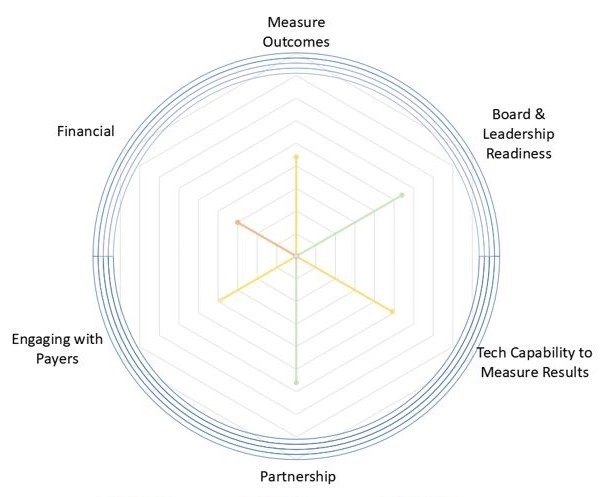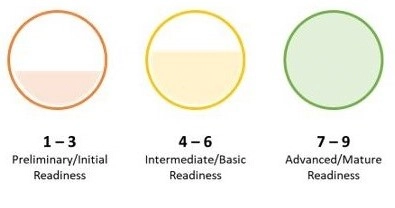This week, our In Focus section reviews a wide-ranging and comprehensive final rule released April 4, 2024, by the Centers for Medicare & Medicaid Services (CMS). The regulation revises and updates policies that affect Medicare Advantage (MA) and Medicare Part D coverage beginning in the upcoming plan year.
The policies adopted in the final rule aim to strengthen consumer protections and guardrails, promote fair competition, and ensure MA and Part D plans can best meet the healthcare needs of Medicare beneficiaries, including individuals dually eligible for Medicare and Medicaid. In addition, the final rule includes important new policies to expand access to behavioral health providers, promote equity in healthcare coverage, and improve access to and use of Medicare Advantage supplemental benefits. These policy changes complement payment policy changes that were recently finalized in the April 1, 2024, CMS CY 2025 Rate Announcement and will take effect June 3, 2024.
Below HMA experts walk through the major policies CMS finalized.
Expanding Access to Behavioral Health Providers
CMS finalized several regulatory changes to improve Medicare beneficiaries’ access to behavioral health services through strengthened MA network adequacy standards. These changes include:
- Establishing network evaluation standards for a new facility-specialty provider category, called outpatient behavioral health. This category includes a range of behavioral health providers, including marriage and family therapists (MFTs), mental health counselors (MHCs), opioid treatment programs, community mental health centers, addiction medicine specialists and facilities. Outpatient behavioral health will be included in network adequacy evaluations.
- Permitting MFTs and MHCs to enroll and start billing Medicare—as a result of statutory changes established in the Consolidated Appropriations Act (CAA) of 2023—and establishing corresponding changes to network adequacy standards for MA plans.
- Requiring MA plans to independently verify that behavioral health providers added to their network furnish services to at least 20 patients within a 12-month period.
- Adding outpatient behavioral health facility-specialty to the list of the specialties that will receive a 10 percent credit toward meeting network adequacy time and distance standards.
Impact: Adding the outpatient behavioral health category is expected to enhance Medicare beneficiaries’ access to a broader scope of behavioral health specialists. As result of the new policy and network expectations, MA plans may need broaden their networks, and providers that contract with MA plans may need to strengthen their capacity to address Medicare billing and reporting requirements, including quality reporting initiatives.
Require Mid-Year Enrollee Notification of Supplemental Benefits
The number of MA plans that offer supplemental benefits to beneficiaries is increasing, with the most frequently offered supplemental benefits including coverage for vision, dental, and hearing services. Moreover, many MA plans also are offering supplemental benefits to address unmet social determinants of health needs, including home meal delivery, transportation, and in-home services and supports. At the same time, use of these benefits is reportedly low, and there are gaps in research and data analysis about how these benefit offerings are affecting beneficiaries’ cost and health outcomes.
As a result, CMS is finalizing policies that require MA plans to engage in outreach to beneficiaries. Specifically, the final rule requires MA plans to send enrollees a mid-year notification regarding their unused supplemental benefits. The notification must include information on the scope of the benefit, patient cost-sharing, and detailed instructions on how beneficiaries can access their unused benefits.
Impact: This change is intended to improve beneficiary awareness of plans’ supplemental benefit offerings and encourage greater use of these benefits. As a result of the regulatory changes, MA plans may look to further refine and adjust their MA supplemental benefit offerings to further improve the healthcare experience for Medicare beneficiaries.
New Standards for Supplemental Benefits under SSBCI
MA plans also offer supplemental benefits to beneficiaries through the Special Supplemental Benefits for the Chronically Ill (SSBCI) program, whereby people with ongoing and complex chronic conditions can receive supplemental benefits that are tailored to their specific health and social needs. In the final rule, CMS establishes new requirements for MA plans to demonstrate the value of these services by submitting evidence that the item or service will improve or maintain the overall health of chronically ill beneficiaries.
Impact: This new reporting requirement is intended to ensure that SSBCI items and services are evidence-based and meaningful. As these regulatory changes are implemented under tight timelines, plans will need to move quickly to compile clinical data and evidence on the effectiveness of these targeted benefits, while also considering changes in their benefit offerings to better meet the needs of beneficiaries with complex and chronic conditions.
MA Star Rating Changes
In the final rule, CMS describes its ongoing work to streamline quality measures, including the agency’s progress in moving toward the Universal Foundation of core quality measures that are aligned across CMS’s quality and value-based programs. CMS notes that MA plans are beginning to report additional measures that are part of the Universal Foundation. Under previous regulations, CMS proposed to make the following changes to specific measures in the Star Ratings system:
- Remove the standalone Part C medication reconciliation post-discharge measure
- Add the updated Part C colorectal cancer screening measure with the NCQA (National Committee for Quality Assurance) specification change
- Add the updated Part C care for older adults−functional status measure with the NCQA specification change.
Impact: These changes build on earlier CMS efforts to improve the Star Rating system, including adding a health equity index and reducing the weight of patient experience and access measures to better align with the CMS Quality Strategy.
Ensure More Dual-Eligible Managed Care Beneficiaries Receive Medicare and Medicaid Services from the Same Organization
CMS finalized several significant changes designed to improve access to integrated care for dually eligible beneficiaries, including the following:
- CMS is limiting enrollment in certain Dual Eligible Special Needs Plans (D-SNPs) to individuals who are also enrolled in an affiliated Medicaid managed care organization (MCO).
- CMS also limits the number of D-SNP benefit packages that an MA organization can offer in the same service area as an affiliated Medicaid MCO. If a state Medicaid agency requires it, MA plans may offer more than one D-SNP for full-benefit dually eligible individuals in the same service area as the MA organization’s affiliated Medicaid MCO.
- Dually eligible beneficiaries will have an opportunity to enroll in an integrated D-SNP monthly under a new integrated care special enrollment period (SEP).
- CMS is lowering the D-SNP look-alike threshold from 80 percent to 70 percent for plan year 2025 and to 60 percent for plan year 2026 and into the future.
Impact: These are considerable changes that are designed to increase the percentage of dually eligible beneficiaries enrolled in MA plans that also are contracted to cover Medicaid benefits. In addition, these changes will expand access to integrated member materials, unified appeals processes across Medicare and Medicaid, and continued beneficiary access to Medicare services during an appeal.
Require Health Equity Assessments of Utilization Management Practices and Procedures
CMS finalized several regulatory changes to the composition and responsibilities of MA plans’ utilization management (UM) committees, including the following:
- At least one member of the UM committee must have expertise in heath equity.
- The UM committee must conduct an annual assessment of UM practices and procedures on health equity, with a particular focus on the impact on beneficiaries who are low-income, dually eligible for Medicare and Medicaid, or have a disability.
- MA plans must make the health equity analysis publicly available on the plan’s website.
Impact: These policy changes are aimed at assessing the impact of utilization management through a health equity lens and ensuring that these policies and procedures do not have a disproportionate impact on access to medically necessary care for underserved populations.
Other Provisions
The final rule makes several other notable regulatory changes to MA and Part D, which include:
- Allowing Part D plans to substitute biosimilars for the reference biologic product during the plan year as part of formulary maintenance changes, which is expected to expand access to lower cost biosimilars for Medicare beneficiaries
- Limiting out-of-network cost sharing for D-SNP PPOs
- Standardizing the MA risk adjustment data validation appeals process
- Establishing new guardrails for plan compensation to agents and brokers to prevent anti-competitive steering of beneficiaries and new requirements to third-party marketing organizations
- Changes to Medicare Part D medication therapy management (MTM) eligibility criteria
What’s Next
CMS continues its work to incorporate requirements for consumer engagement and transparency of data to address health equity. This final rule is poised to have a significant impact on plan benefit design and the landscape of health insurance markets in states and regions of states. CMS has created additional opportunities for states to advance integrated care initiatives that align with Medicaid, which will have downstream implications for MA and Medicaid plans, providers, and partnering organizations.
The Health Management Associates team will continue to analyze and assess these regulatory changes that CMS has finalized. We have the depth, experience, and expertise to assist in tailored analysis and model policy impacts of the recently finalized changes. For more information or questions about the policies described, contact Amy Bassano, Julie Faulhaber, Andrea Maresca, or Greg Gierer.


